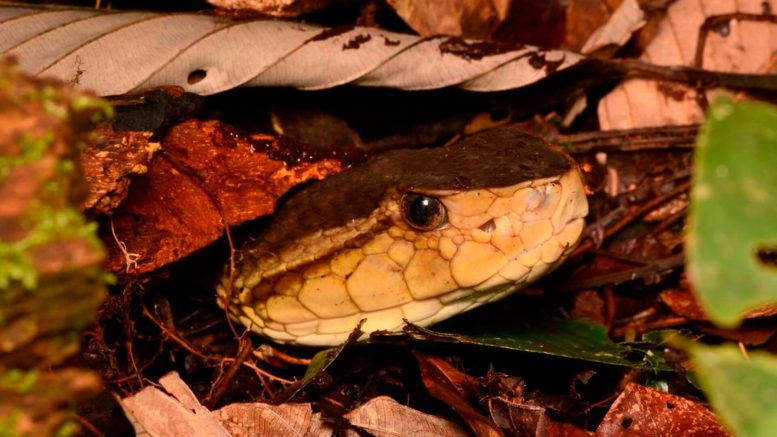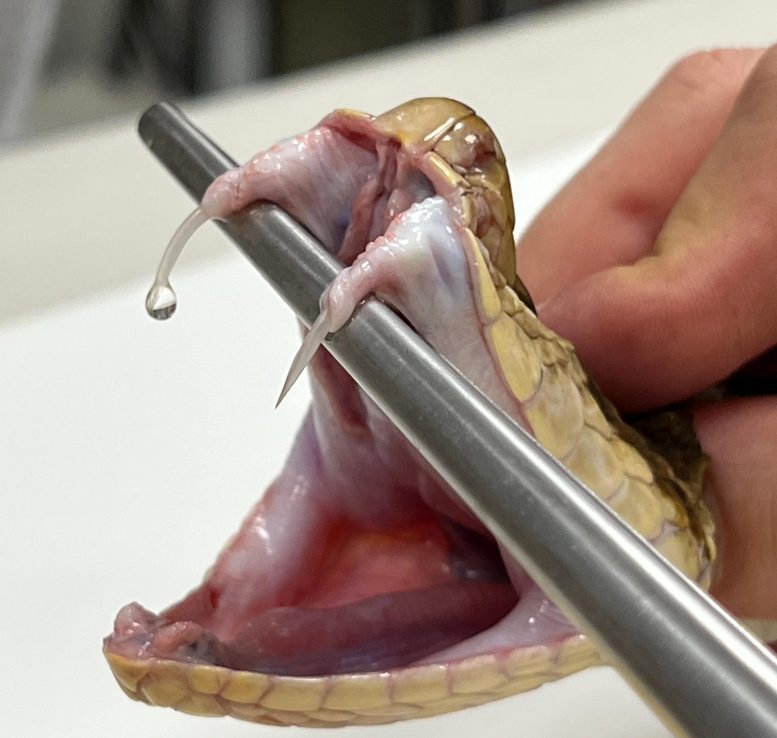
A promising antibody failed testing. This is good news for developing a broad-spectrum antidote against the world’s most dangerous snake venoms.
What makes a soldier switch sides? That is a really good question. Especially when the soldier is an antibody that is supposed to defend the body against one of the world’s most dangerous snake venoms, but instead ends up helping the venom kill the body.
The question has become topical after a group of DTU researchers slightly changed how they tested an antibody that had previously proven promising as an antidote to snake venom. In the first experiment on mice, the damaging effect on muscle tissue from the venom of Bothrops asper, a Costa Rican lancehead snake, was neutralized as expected. But in the second experiment, the antibody enhanced the snake venom’s potency, so that it no longer just affected the muscle tissue, but ended up killing the mice.
More than 100,000 people die annually from snakebites
In 2017, the World Health Organization (WHO) added snakebites to the list of neglected tropical diseases. Every year, 5.4 million people are bitten by snakes. Most happen in poor areas of the world where there is no viable market for pharmaceutical companies. Approximately 100,000 die from snakebites yearly, while three times as many are permanently disabled.
An international group of researchers, led by Professor Andreas Hougaard Laustsen-Kiel from DTU, is working to develop a new generation of broad-spectrum antivenoms that are effective against many snake species. The group aims to base antidotes on antibodies compatible with the human immune system and can eventually be cultivated in cell tanks.
When and how the antibody was administered made the difference between life and death. In the first experiment, snake venom and antibody were mixed together for 30 minutes before being injected into the muscle tissue of the mouse. This method is only slightly similar to treating a real snakebite.
In the second experiment, the researchers simulated the usual real-world scenario, where antivenom is administered after a snakebite: First, they injected the poison into the muscle tissue of the mouse. Three minutes later, they injected the antibody into the mouse’s veins.

“The fact that the antibody amplifies the toxin when venom and antidote are administered in different ways is an incredibly interesting discovery from a research point of view,” says Postdoc Christoffer Vinther Sørensen from DTU, who was the one testing the antibody when the observation was made.
“This is a significant discovery we have arrived at,” says Professor Bruno Lomonte from the University of Costa Rica. Alongside his colleague, Professor Julián Fernández, he has collaborated with Christoffer Vinther Sørensen and his project supervisor at DTU, Professor Andreas Hougaard Laustsen-Kiel, for the past 4 years. They hope that the discovery will contribute to expediting the development of the next generation of antivenom, ensuring that many people in need can benefit from it sooner.
The discovery has just been published in the renowned scientific journal Nature Communications.
ADET – A complicated phenomenon
ADET, antibody-dependent enhancement of toxicity, is an immunological phenomenon similar to the phenomenon of antibody-dependent enhancement, ADE, which is already the subject of intense research.
ADE is best known from viral infections, where it can occur when antibodies from a previous infection with a particular virus bind to a new strain of the same virus or to a related virus, but do not neutralize it. This non-neutralising binding may then, in some cases, enhance the harmful effect of the virus, for example by making it easier for the virus to penetrate the body’s cells.
Antibodies play a crucial role in the body’s defense against pathogens. They are produced in the immune system and bind to bacteria, viruses, or toxins, preventing them from developing, penetrating the nerve pathways, or exerting their toxic effects.
First time ADET is observed in connection with animal venoms
The phenomenon, which the researchers have observed, is known as antibody-dependent enhancement of toxicity (ADET) and has not previously been observed in connection with toxins from the animal world and it remains a mystery in most areas. For example, scientists do not know how an antibody designed to combat venom can switch sides and instead intensify the toxins’ attacks on the body.
“We haven’t figured out how this happens, but it helps to identify another important aspect that should be tested when working with antibodies,” says Christoffer Vinther Sørensen.

His research project is part of international research work aimed at finding a broad-spectrum antivenom based on human antibodies that can be used as treatment against the world’s most dangerous snake venoms.
“Antibodies can fail in many ways. By mapping these ways, we and other antidote researchers in the future can ensure that promising antibodies are tested as soon as possible in the most essential experiments. We hope that this allows us to discard antibodies that are not optimal and quickly arrive at a final antivenom that can neutralize the world’s most dangerous snake venoms,” says Christoffer Vinther Sørensen and adds:
“While we don’t know why a ‘soldier’ switches sides, we now know that it’s something to keep an eye on, even with our close friends, the antibodies.”
Reference: “Antibody-dependent enhancement of toxicity of myotoxin II from Bothrops asper” by Christoffer V. Sørensen, Julián Fernández, Anna Christina Adams, Helen H. K. Wildenauer, Sanne Schoffelen, Line Ledsgaard, Manuela B. Pucca, Michael Fiebig, Felipe A. Cerni, Tulika Tulika, Bjørn G. Voldborg, Aneesh Karatt-Vellatt, J. Preben Morth, Anne Ljungars, Lise M. Grav, Bruno Lomonte and Andreas H. Laustsen, 16 January 2024, Nature Communications.
DOI: 10.1038/s41467-023-42624-5